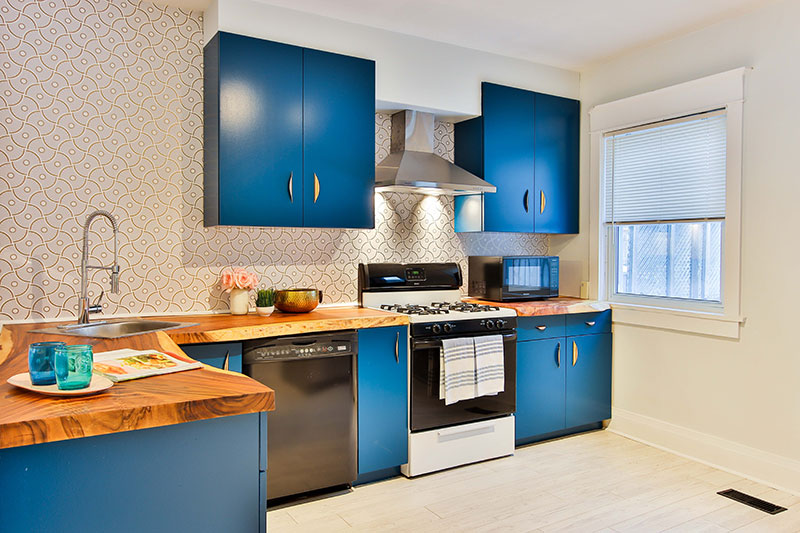Advertisement
Designing your dream kitchen can be a daunting task, but an exciting one too. When picking out a brand new layout and all its fixtures, you have full control over each and every detail — but where do you begin? With so much to consider, it’s essential to think through how each choice fits with your lifestyle, and approach these decisions when you’re as informed as possible.
To help you on your way, here are our four top tips for designing your kitchen from scratch.
1. Visit showrooms
In recent years, we’ve grown pretty accustomed to seeing everything through a screen. Family, friends, big life events — it’s amazing how technology has helped us adapt. When it comes to kitchen design, however, you really should take your planning offline and visit a showroom. The average Brit will spend a total of three years of their lives cooking in the kitchen, and even more if it’s where you eat too. Therefore, you want to make sure your cabinetry and surfaces are finished to a good standard, and feel like the real deal — and these are the kind of checks that can only be done in person.
What’s more, showroom experts can offer planning solutions for your kitchen remodel, making it well worth your time to visit one. For instance, kitchen fitters Harvey Jones explain that at showrooms, designers can provide advice on “thoughtful space planning, furniture selection and layered design choices”. By visiting and meeting with staff, you can receive tailored guidance and inspiration for your design, and get the all-important rundown on the styles you like and the ones you don’t.
2. Think practically
A beautiful kitchen also needs to be highly functional. Good floor plans are vital — since this space often doubles up as a gateway out to the garden, you’ll need to allow for some thoroughfare and door clearance out to the back. This is especially important for making sure you can get anything through the house as well as affording yourself ample galley space to carry out cooking, cleaning and other tasks.
Your cabinetry also needs to be efficient. Nowadays, space is at a premium, as our urban populations grow and property dimensions shrink to fit all us all in. In 2020, the average UK property size dipped to a new low of 90.2 m². Smart solutions like drawer inserts and pull-out corner units are more important than ever, helping to declutter your surfaces and free up space.
You should also consider height: storage options can extend under and above cabinets for those possessions that crowd your cupboards but aren’t in frequent use. As for key fixtures, make sure all appliances are accessible and that doors don’t infringe upon limited kitchen work space. We all value aesthetics, but you also need to think practically about the day to day as you wear in your new kitchen.
3. Double up or double down
Speaking of appliances, it’s also important to shop wisely and only select those that you really need. American-style fridge freezers are a big luxury — both figuratively and literally — but large investments like these, or extra ovens, for instance, could be worthwhile if you have a lot of mouths to feed.
Similarly, if you’re a budding chef living alone and wanting the latest and greatest equipment, prioritise extra kitchenware cabinets where other fixtures can be omitted. Countertops can also be kept to a minimum if you’re not using your kitchen as a family living space. You’re designing your kitchen, and you should tailor it as such — it doesn’t have to be a replica of a brochure example.
Think about what you need and scale up or down accordingly to truly personalise your space to your needs and lifestyle.
4. Keep organised
With all the hustle and bustle of the kitchen, bits and pieces can easily go missing or crammed to the backs of cupboards, never to be seen again. This is especially true if your space is doubling or even tripling up as a living area and home-office. To help you keep on top of your new layout, an effective labelling system can keep all household members in check. For efficient storage, you can decant frequently used pantry goods like cereals and tea-bags into their own containers, and label designated cupboard slots for things that are often waylaid.
As an extra for family set-ups, it may also be worth factoring a message centre into your design. This can be as simple as a mounted chalkboard and a calendar to keep everyone in the loop, displaying important appointments, shopping lists or contact numbers.
It’s important to bear in mind that new design features don’t have to be flashy and come at a large expense — they just need to work well with your lifestyle.

